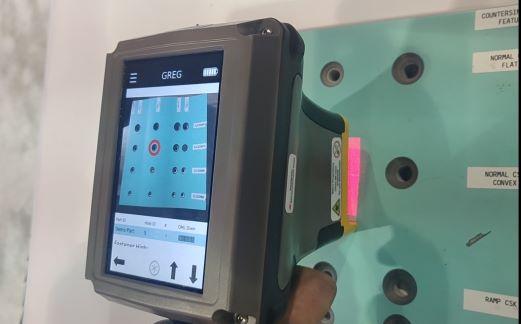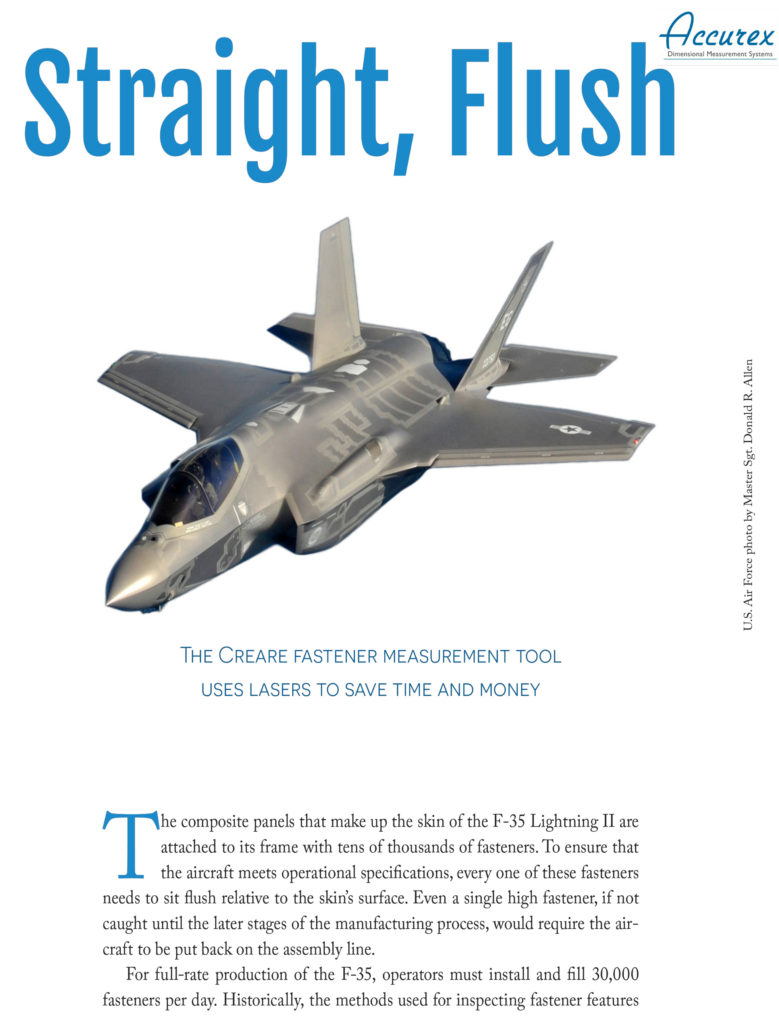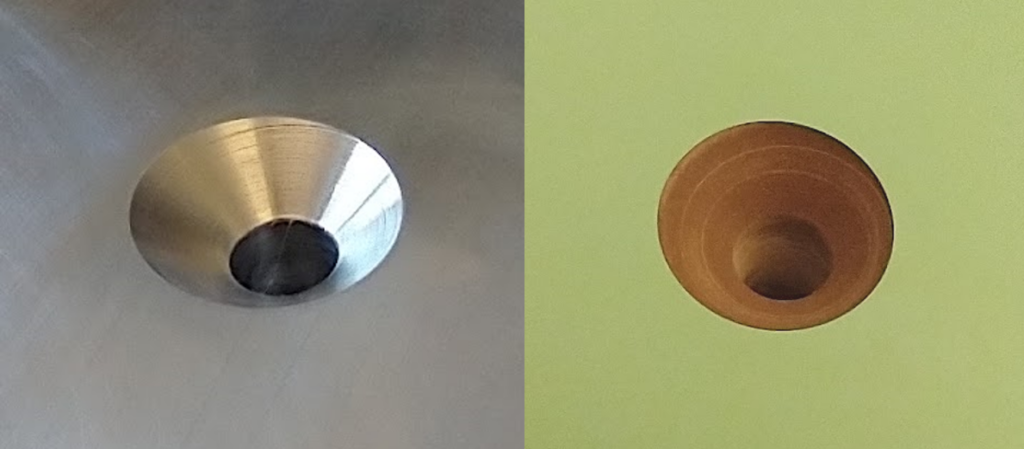Countersinks (aka countersunk holes) are conical holes drilled into the surface of a material which enable a fastener to be recessed into the material so the head of the fastener sits flush, or nearly so, with the material surface.
Image by Inductiveload – Own work, Public Domain
Countersinks are widely used in the manufacturing of many different types of products. I wouldn’t exactly call it manufacturing, but just last night I had to drill a countersink for a homemade dog door I was installing!
Although countersinks are commonly used, the criticality of the countersink shape varies dramatically depending on the type of product on which it will be used. The tolerances and inspection requirements change along with how critical the countersink shape is. As you can imagine, the criticality of my dog door countersink was non-existent, and the inspection consisted of eyeballing to see if it seemed about the same as the countersink next to it that I was trying to replicate.
At the other end of the spectrum, you have products like aircraft structures where the shape of the countersink is extremely important. The depth of the countersink as indicated by its top diameter (OML diameter in aerospace parlance,) the angle of the countersink cone and the angle of the countersink axis are all important. These tiny variables affect mission-critical characteristics like structural strength, aerodynamic drag, radar signature and durability. As a result, countersinks for aircraft applications often have tight tolerances.
Manufacturers of aircraft structure and other complex critical products are therefore careful to inspect countersinks as part of their quality control processes. They inspect countersinks when they are drilled to assess where the fastener will land when it is installed. Drill too deep, the fastener lands too deep, and you may start running into structural issues. Drill too shallow, the fastener lands too high, and you start seeing issues with aero smoothness and other requirements.
The traditional and most common method for measuring countersunk holes is using a purpose-built contact gauge for countersinks. Such gauges are used extensively and they have been used for a long time – not just for years or decades, but for generations. In a controlled laboratory environment, on very simple flat parts, with highly trained operators, these tools can be very repeatable.
Though reliable, there are some drawbacks to the traditional countersink gauge. Each gauge is suitable for a narrow range of sizes so most shops have several sets of gauges. The measurement process relies upon a spherical plunger contacting the wall of the countersink cone to mimic the ball over height method of countersink measurement. This method infers the countersinks characteristics from the sphere position so while precise, there are some assumptions made in the gauging process. There is no digital record of measurement from such gauges so if a record is needed, it requires inspectors to take time to carefully write down or type in the measurements.
Last, but certainly not least, the inspection accuracy and repeatability depends upon the operator selecting the correct gauge and using proper technique to obtain a good measurement. With the labor challenges and turnover facing many manufacturers these days, meeting that pre-requisite for good measurement can be difficult
As aircraft designs have advanced over decades to push the performance envelope, the materials, construction methods and manufacturing tolerances have evolved as well. At some point, the folks in the US Dept. of Defense decided that using nearly the same methods for assessing countersinks on the F-35 as were used for the P-51 did not make sense. So they drove the development of the modern countersink gauge.
That state-of-the-art countersink gauge is called the FMT, for Fastener Measurement Tool. It has that name because it is not just a countersink gauge but rather a device for inspecting aircraft fasteners, both the countersunk holes they go into, the flushness of the installed fastener and the smoothness of a filled fastener on a low-observable aircraft. Though originally developed for use with military aircraft, the FMT is now available for use with all types of aircraft and aerostructures.

Now to the original point of this article: how to measure a countersink. There are actually two ways to measure a countersink with FMT. The first is to simply position and pull the trigger. The results appear in about 2 seconds and may include any or all of the following: OML diameter, Countersink angle (of the cone), Axis angle and Axis orientation.
The second way to measure a countersink is very similar but has one additional benefit. If you first select the fastener that will be installed in the countersunk hole, then FMT can report all of the above but will ALSO predict the flushness of the installed fastener relative to the surrounding surface. Since that is normally the primary concern of countersink inspection, it is a very helpful feature.

FMT offers an improved way to measure countersinks. It uses a multi-line 3D laser scanner to very quickly digitize the countersink and surrounding surface. It instantly processes that 3D point cloud to determine all relevant characteristics of the countersink using actual data without assumptions. There is no technique – the operator simply places FMT over the countersink and pulls the trigger. Measurement is fast (about 2s), typically better than 0.0003” accuracy for most outputs and can keep a digital record of every measurement, tied to inspection point location if desired.

Do you want to improve your inspection of countersinks and installed fasteners? Learn more here: https://accurexmeasure.com/fastener-inspection/
Download Our F-35 Case Study



